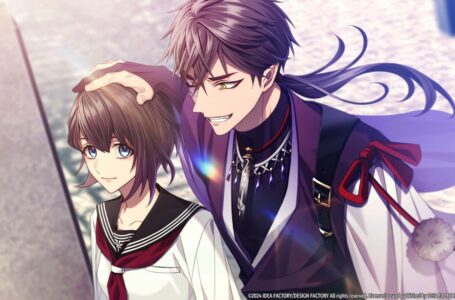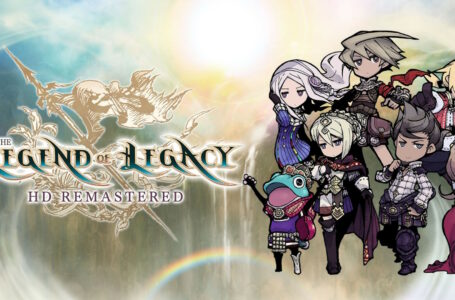Attack the Backlog: Taking a first look at Trinity Universe (#1)
Your Editor has a problem, dear reader, and no, it’s not his habit of referring to himself in the third person. He can stop doing that any time he wants, but he simply chooses not to.
No, your Editor’s problem is one that I suspect many of you also suffer with: a bulging backlog of constantly increasing size, filled with a wealth of games that are doomed to never be played… probably.
Well, that all changes right now! Starting today, your Edi– I’m going to set aside an hour or so each day (where practical) to actually play something from the backlog on my shelf, and I’m going to keep myself honest by recording some no-commentary gameplay footage that you can follow along with. Not only that, I’m going to provide some written commentary on my experiences and determine whether the games I’m trying out are worth persevering with, if I should perhaps try them when I’m in a different frame of mind or if I should just resign myself to the fact I’m never, ever going to beat them.
I don’t have any set format in mind for this — sometimes we might play the same thing several days in succession, at others we might play different things each day. It all depends on the mood — and how much I’m enjoying the various games from my backlog. But if you particularly enjoy watching or reading about something and you haven’t seen it for a while, be sure to let us know — requests can certainly be accommodated!
We kick off today with an obscure pick that I’ve been meaning to explore ever since I fell in love with the Neptunia series a good decade ago: it’s Idea Factory’s Trinity Universe for PlayStation 3, which is not a game that I’m expecting to be “amazing” or anything, but I’m definitely curious to try it. It’s the first game in which we saw Tsunako’s art, and one of several games from the period that was a “crossover” title between several developers and publishers.
So let’s take a look!
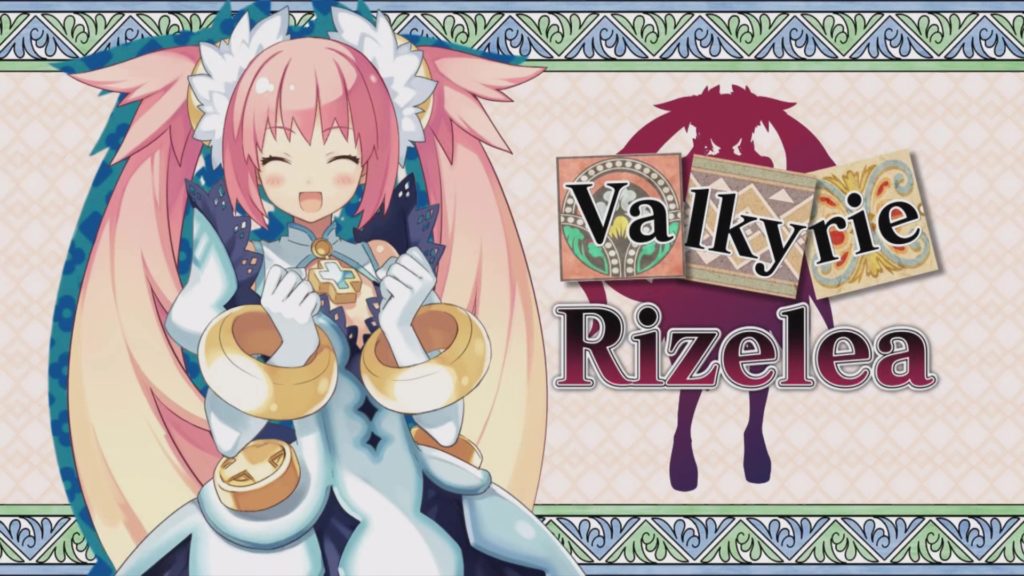
Diving into Trinity Universe
Enjoy the footage, and be sure to subscribe to us on YouTube!
Trinity Universe first released for PlayStation 3 in 2009, and was released as a collaborative effort between Nippon Ichi Software, Gust and Idea Factory. It was one of the first games for all of these developers to make use of fully polygonal three-dimensional characters — though Gust’s own Atelier Rorona: The Alchemist of Arland beat it to market by a couple of months — as well as an early game to make use of Live2D animated characters rather than static 2D portraits.
The concept behind Trinity Universe is that there’s a “Netherverse” floating in space, whose capital Empyria is constantly at risk from various otherworldly objects floating around and occasionally coming into close orbit. Playing as one of two characters — either the Demon Dog King Kanata or Valkyrie Rizelea — it’s your job to discover the truth behind these floating objects and ensure that the Netherverse remains safe.
The choice between the two characters is handled much like Gust handled Mana Khemia 2: Fall of Alchemy the previous year: their scenarios unfold independently from one another, but occasionally cross over, and typically visit a lot of the same locations. The two protagonists are also given a somewhat adversarial relationship with one another, though at heart they know they’re both working towards a common goal.
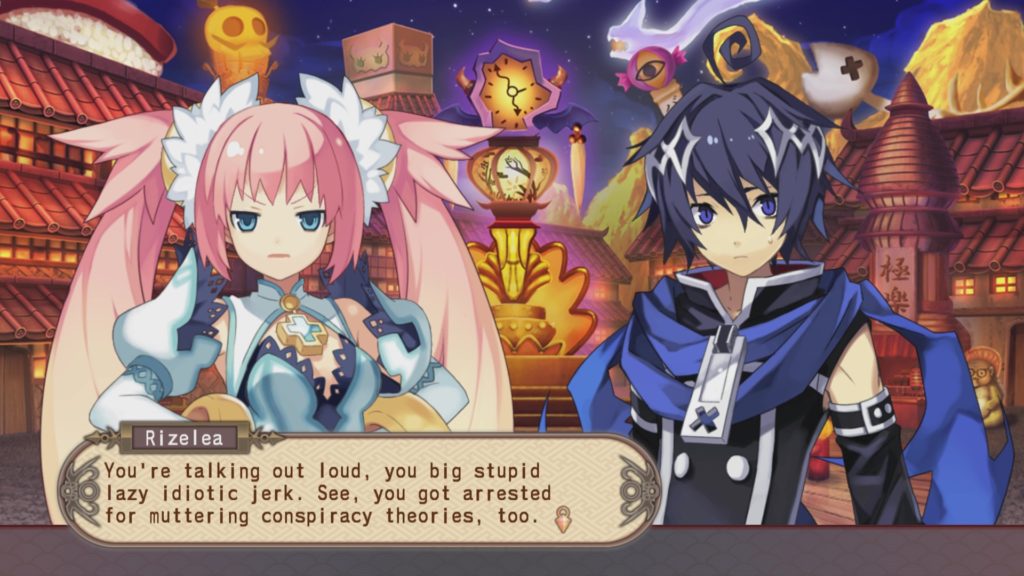
Idea Factory’s stuff from the PlayStation 3 era didn’t have the best reputation among the mainstream press of the time; indeed, there are still many critics who hold this entire period of their history against them despite the fact that their more recent work has been of very high quality. It’s hard to say if Trinity Universe is the origin point of this rather unreasonable hatred towards them, but regardless, it’s an important part of their past — and thus a game I was keen to investigate.
To give you some context, I have an intimate familiarity with Idea Factory and Compile Heart’s initial Neptunia games for the PlayStation 3, and I fell in love with them as a developer through these games; I’ve followed their work enthusiastically ever since.
Despite having a copy of Trinity Universe on my shelf for some time, though, I never actually got around to trying it out until now — and thus I had no real expectations except a sort of fuzzy feeling that, if anything, it was probably going to resemble the very first Neptunia game more than anything.
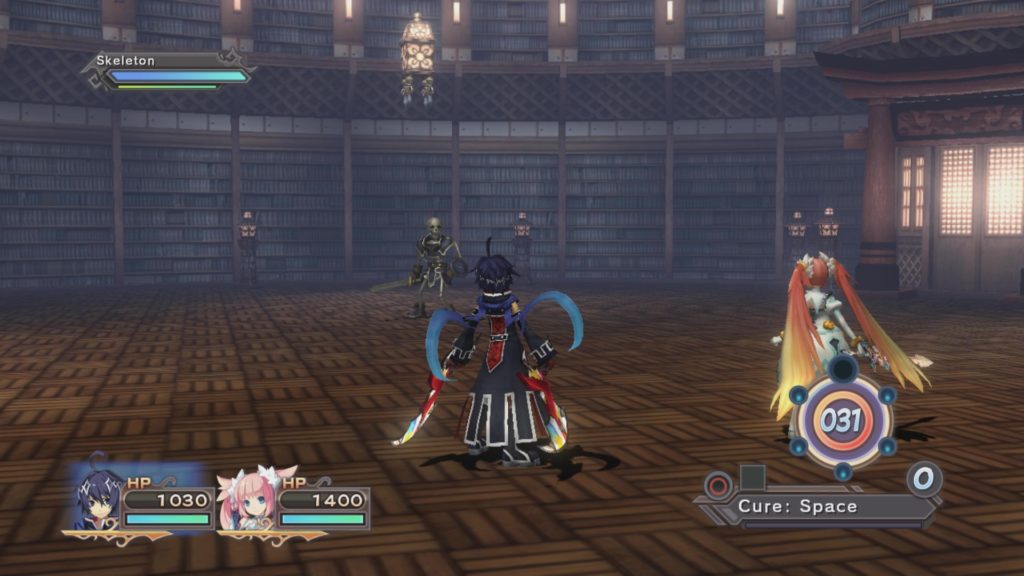
And that is a game that divides opinions even more than later installments in the series; few can deny that it has some highly creative and interesting mechanics, but whether or not those peculiar mechanics actually make it good is a matter of debate. I loved it — particularly when combined with the snappy wit and satire present throughout the script even from this first installment — but others are not so fond. And that’s fine.
Trinity Universe, though, I never see anyone talking about — either in positive or negative tones. So as the immediate predecessor to the Neptunia series, it’s a potentially fascinating title to contemplate.
Like many other games from the period, it’s a bit of a slow burn to get started. Video games in general — not just Japanese RPGs — tended to become heavily tutorialised and front-loaded with exposition in the seventh generation of games consoles, and this is very much the case in Trinity Universe. There’s a lot of initial scene-setting and tutorial information — some of which could probably have been saved until later and some of which, like the shop tutorial, is arguably completely unnecessary — but this does a lot to establish the tone of the game.
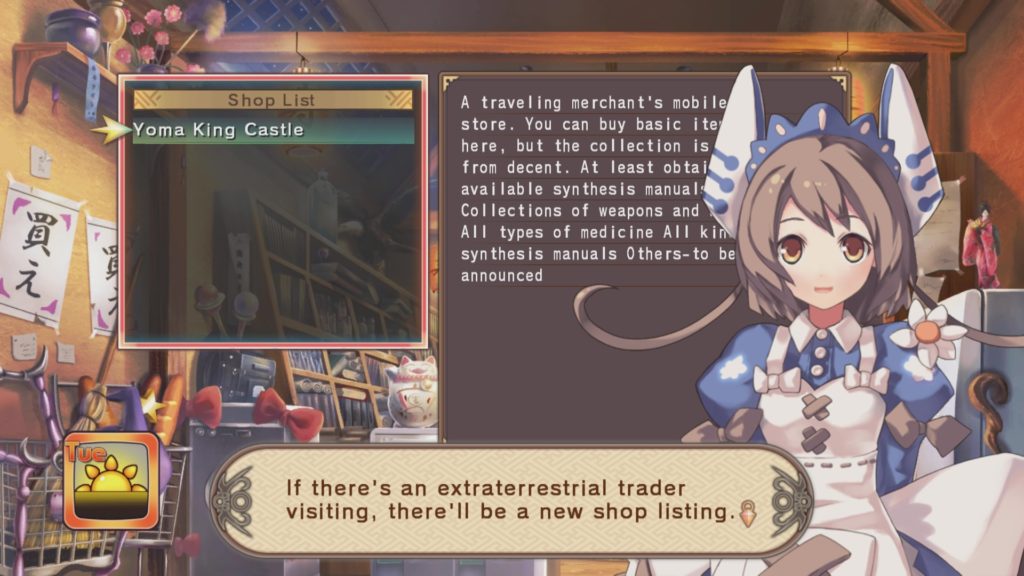
Like Neptunia, Trinity Universe takes a rather light-hearted approach to its setting, occasionally breaking the fourth wall to address the player and poke fun at conventions of the genre. It’s not quite as in-your-face about this aspect as Neptunia is, but it’s recognisably Idea Factory.
Structurally, once you’re past the initial events and tutorials, Trinity Universe is structured very much like the original Neptunia. Events can simply be selected from a menu, as can dungeons; initially there’s just one to choose from, but it looks as if once you’ve made some progress, you’ll have “Event Dungeons” that advance the story, as well as dungeons that you can simply explore to gather items, fight enemies and explore the game to its fullest.
In a dungeon, you control your chosen character — Rizelea in our case for this playthrough — from a third-person perspective and simply run over item bags on the ground to pick them up; this side of things very much resembles the late PS2-era Atelier games, albeit from a full 3D polygonal viewpoint rather than using isometric 2D art or 3D “blocks”.
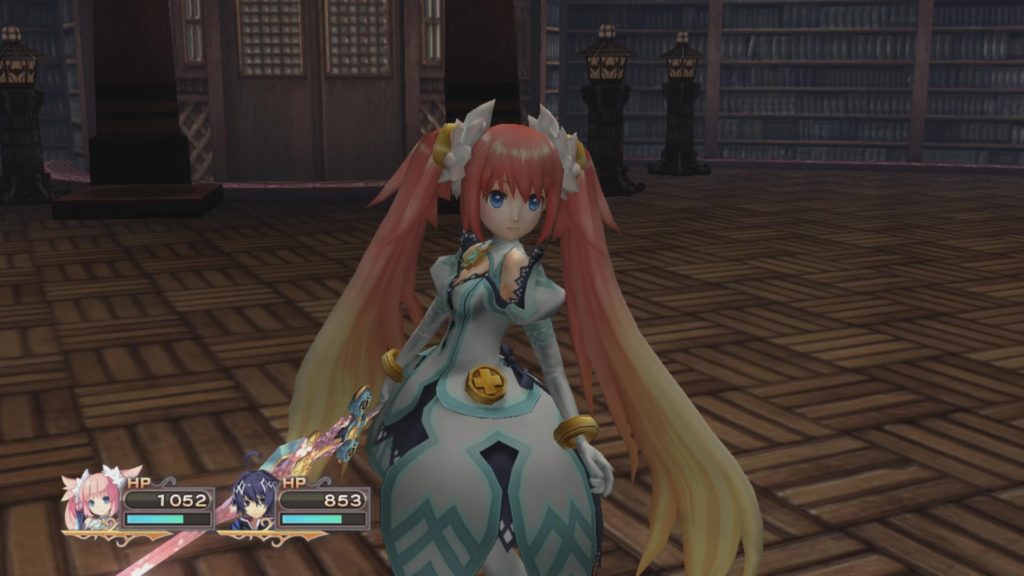
Unlike the later Atelier Iris and Mana Khemia games, however, Trinity Universe makes use of a simple random encounter system, whereby simply wandering around will occasionally trigger a battle. Opinions have, of course, varied as to this approach to battles over the years — but it seems to be pretty widely accepted in the dungeon crawler subgenre, which Trinity Universe would appear to exist on the very periphery of in many ways.
Battles are where Trinity Universe looks set to be at its most interesting. Each character has a stock of Action Points (or “AP”) which can be used during their turn. Once the character starts taking actions, these count down in real time, meaning you’ll need to make some quick decisions and trigger your abilities as efficiently as possible — or at the very least, consider your strategy before starting a turn.
There are elements in common between Trinity Universe’s battle system and the second and third Neptunia games; most notably the fact that characters can make use of three different types of attack, mapped directly to the face buttons on the controller. Rush attacks do little damage but hit lots of times; powerful attacks hit harder but for fewer hits; and magic attacks cost a lot of AP but hit the entire party of enemies at once.
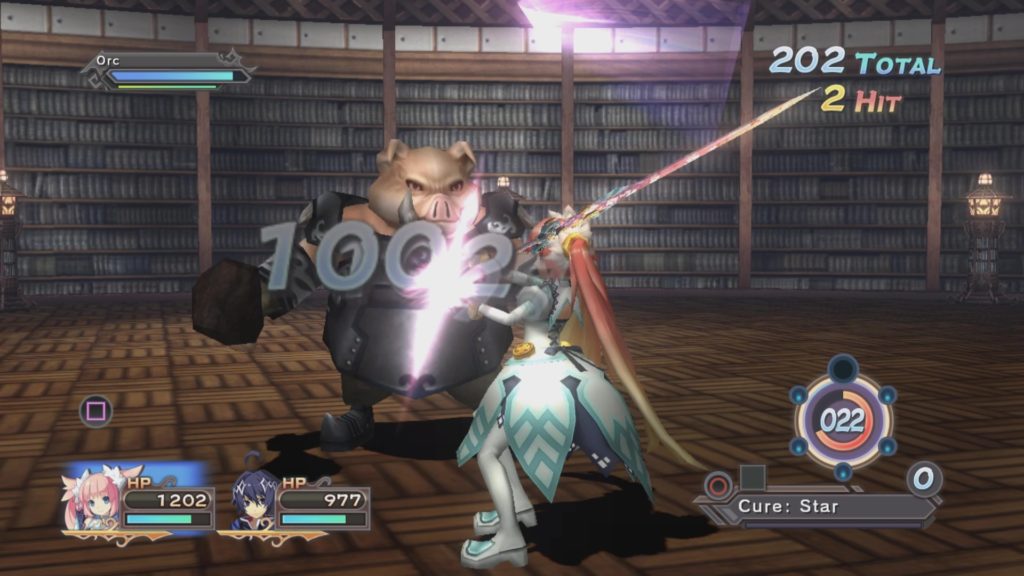
Where things get interesting is in the fact that using these three types of attack in different combinations triggers various additional abilities. Some of these are common skills that everyone can perform, some are character-specific and some are attached to particular pieces of equipment. In the first hour or so of gameplay, you don’t get a lot of opportunity to play with these — though one of the many tutorials does give you a preview of what to expect when your characters have a bit more AP to play with.
When not in combat, Trinity Universe allows you to use a “Search” action in dungeons. This sends out beams of light pointing to various points of interest, and you’ll need to Search again at that location to reveal hidden items or other elements. The twist is that you only have a limited number of Search uses per expedition, so you’ll need to use them efficiently, particularly in larger dungeons.
Upon “clearing” a dungeon by defeating a boss or seeing an event at its far end, a countdown timer will begin and you’ll need to escape. While escaping, rare items will appear on the ground, but you’ll need to determine if you have time to grab them on your way out. And when you finally escape, you’ll be given a “score” according to a variety of factors such as the distance you travelled, the items you found, the hidden “Search” items you uncovered and a number of other things.
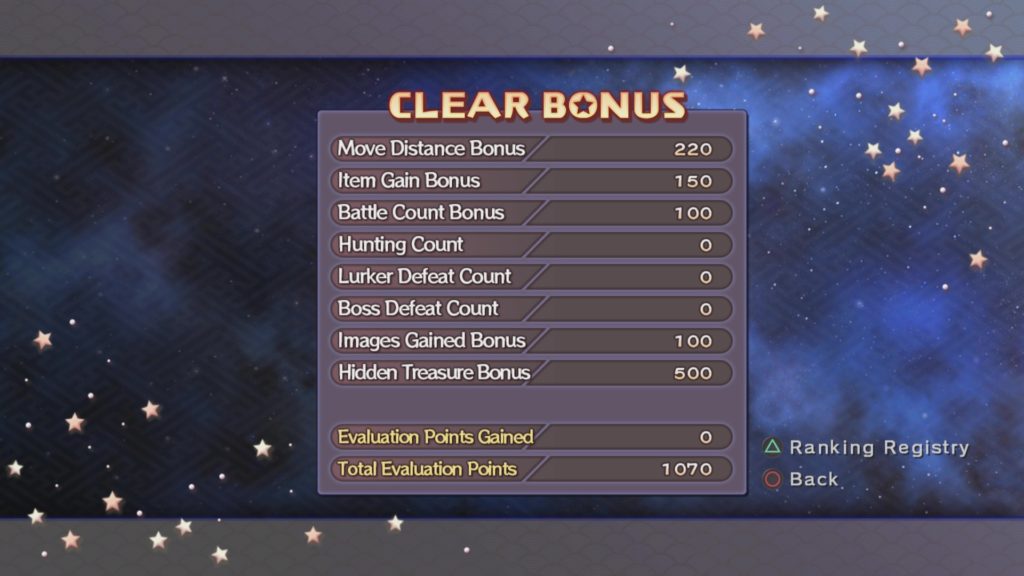
This latter aspect gives a pleasingly “arcadey” feel to the dungeon delves, and I suspect is one aspect that is going to keep me coming back to Trinity Universe — particularly as scoring enough points unlocks bonuses and increases your overall “Rank”.
After a little over an hour’s gameplay, I feel like I’ve got a general idea of what Trinity Universe is about, but I suspect things will get more interesting as more party members are added to the mix and more mechanics are added. We leave off today’s session just as Violet (from Atelier Violet, a pre-Atelier Iris installment in the series that never came west) entered the picture, so I suspect we’re going to be getting involved in some crafting and alchemy very soon — but we’ll have to wait and see, I guess!
I think we’ll spend a bit more time with this one and see how things go. Feel free to share your own experiences down in the comments or via the usual social channels!
Join The Discussion
Rice Digital Discord
Rice Digital Twitter
Rice Digital Facebook
Or write us a letter for the Rice Digital Friday Letters Page by clicking here!
Disclosure: Some links in this article may be affiliate links, which means we may earn a small commission if you make a purchase after clicking on them. This is at no additional cost to you and helps support Rice Digital!
- Letter from the Editor: passing the torch - June 30, 2023
- Super Woden GP 2 is looking promising - June 30, 2023
- Inti Creates is making a 32 bit-style Love Live action platformer - June 26, 2023





